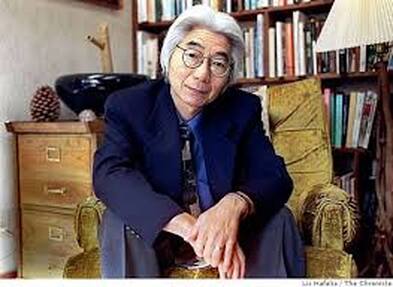 "Ronald Takaki" "Ronald Takaki" For the second to last day of Asian-American Heritage Appreciation Month, we will be talking about the accomplishments of Mr. Ronald Takaki, best known for his works that rewrote Asian-American history in a new light. He challenged western conceptions of Asian-Americans and other minority ethnic groups and emphasized the achievements and advancements Asian-Americans made for the United States. Born in Honolulu, Ronald Takaki was raised by his single mother on a plantation. His father died when he was seven. As a boy, he was extremely passionate about surfing. He soon became known as “Ten-Toes Takaki” for his signature hang-ten style. Besides surfing, he was also passionate about his ethnic identity. When he moved onto college, he attended the College of Wooster in Ohio. There, he found himself becoming more passionate about the subject of Asian American History than ever, being one of the two only Asian-American students i the entire college. He went on to the University of California, Berkeley to achieve his master’s degree and Ph.D. His first book was released in 1973, a dissertation on slavery in America. He accredits this time in his life to when he became intellectually and “politically” aware. From there, he became more politically active, fighting against racism and segregation in several parts of America. When he found a job, Takaki taught the first black-history course at UCLA. This followed the infamous Watts riots, when over 34 people died during the violent aftermath of African-American, Marquette Frye’s violent arrest due to police using excessive force. Takaki set an important example for us today. He transcended his own ethnic identity and stood up for all minorities. Whether black, Asian, Hispanic, Indian-American, he recognized the struggles that all minorities face in America. And he gave these minorities a voice. Considering the recent riots surrounding George Floyd’s death, there has been tons of social media controversy about whether Asian-Americans should join the fight. Ronald Takaki would’ve without hesitation, done whatever he could to support George Floyd and the black community’s fight for equality and an end to police brutality. Without question. During his lifetime, Takaki wrote several books on minority identity, including the “model-minority structure” of Asian-Americans. His most famous work is probably “A Different Mirror: A History of Multicultural America.” Throughout his life, Takaki was known for encouraging people to think, rather than just teaching them. His legacy lives on today, as we remember his dedication to shedding light on minority issues and his determination to change how American history is written. Author: Carina Sun
0 Comments
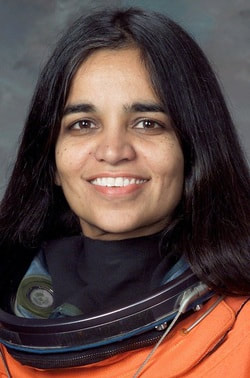 "Kalpana Chawla" "Kalpana Chawla" Kalpana Chawla was born in Karnal, India, on July 1, 1961. She was one of four children, and studied hard in school her whole childhood, having an early passion for space and being an astronaut. Her primary school allowed two girls a year to visit NASA, which may have been one of the factors that inspired her to pursue aeronautic studies. Later, she obtained a degree in aeronautical engineering--being the first woman to ever study the subject at Punjab Engineering College. Afterwards, she earned a doctorate in aeronautical engineering at the University of Colorado. Her career started at the NASA Ames Research Center where she worked on research. She quickly moved her way through the aeronautical field, and garnered a certificate for being a flight instructor. When Chawla became a naturalized citizen in 1991, she quickly took her new opportunity to apply for the NASA Astronaut Corps. With a year of training, she became the crew representative for the Astronaut Office EVA and Computer Branches, where she helped to test new software and programs for space shuttles. Her first voyage into space was in November 1997, where she and 5 other astronauts went into space to carry out many experiments and study the outer layer of the sun. They re-entered the earth's atmosphere just over two weeks later. Her second voyage however, ended in disaster. The shuttle STS-107 was sent into space in 2003 after several delays. Again, the seven member crew completed many experiments about astronaut health, safety, and space science. When the shuttle initially launched, a part of the insulator broke off and struck the left wing of the orbiter, which was considered minor damage at the time. Unfortunately, this was proven to be incorrect as when the shuttle reentered the atmosphere, the damage allowed heat and gases to enter the internal wing structure, which tore it apart and caused the entire spacecraft to break apart, killing all crew members aboard. Kalpana Chawla died on February 1, 2003 in the disaster along with the other members aboard: Rick Husband, Laurel Clark, Ilan Ramon, David Brown, William McCool, and Michael Anderson. Her legacy though, will live on forever as she continues to inspire young dreamers and aspiring astronauts to pursue their dreams, no matter how impossible it seems or what backgrounds they come from. As the first Indian woman in space, Chawla truly made a mark in history books, not only for her accomplishments but also for her defiant and persevering character--someone who was truly passionate and driven to pursue their dreams. Author: Carina Sun 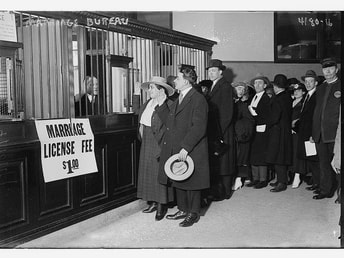 "Couples waiting in line for marriage licenses." "Couples waiting in line for marriage licenses." In March, 1927, the Expatriation Act was introduced in the United States. This Act decreed that any U.S. woman who married a non-citizen would lose their U.S. citizenship. To regain their citizenship, they would have to go through the naturalization process. Let's understand one thing first: what does being a U.S. citizen entail? It requires that you are either a citizen at birth (born in the United States or certain territories or outlying possessions of the United States, and subject to the jurisdiction of the United States) or that you have successfully applied for a "derived" or "acquired" citizenship through parents or applied for naturalization (which includes the test on English and U.S. Civics). A breakthrough came in 1920, when American women finally got the right to vote. They began protesting and articulating their ideas to lawmakers. Congressmen now had to please women in order to stay in their positions, and so slowly, things began to change. In 1922, Congress passed The Cable Act, which essentially meant that women would not be able to keep their citizenship if they married a non-citizen man who could become a citizen. However, U.S. women would still be stripped of their U.S. citizenship if they married a man who was ineligible for U.S. citizenship. At this time of anti-Asian sentiment, this was a major conflict with the Nisei women in the U.S. Nisei means second-generation Japanese-Americans, meaning that by the law, they are considered U.S. citizens at birth. At the time, Asians were not eligible for U.S. citizenship as they were labeled "enemy aliens", still suffering from the racial discriminations stemming from the 1882 Chinese Exclusion Act and increased Asian immigration rate. In fact, the fine print of the Cable Act stated that a woman could keep her US citizenship after marrying a non-Asian alien if she stayed within the United States. This essentially excluded Asian men from marrying U.S. citizens at all. The Act was protested by U.S. women all over, but especially the Nisei women, including Suma Sugi who lobbied to change the Cable Act, and was successful in 1931 when Congress amended the act to allow Japanese-American women to marry Japanese men without consequences like losing their citizenships, and brought the eventual end of the Act in 1936. Author: Carina Sun 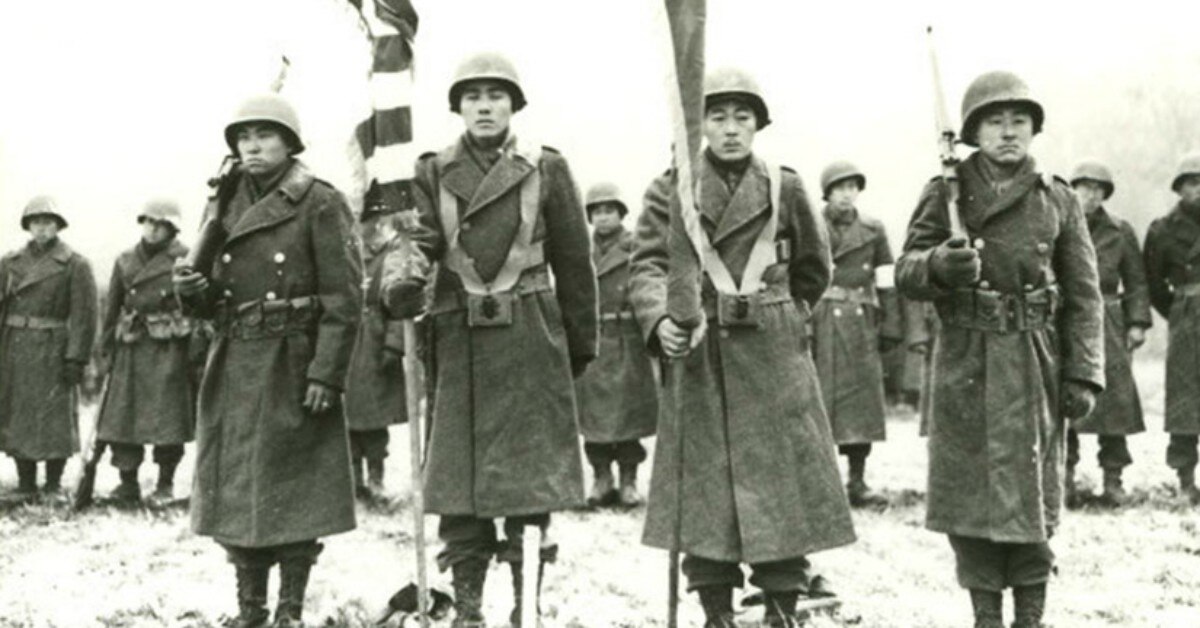 In honor of Memorial Day, it's important to remember the soldiers who risk their lives everyday for our safety. This day, we should sit back and take the time to really appreciate the veterans and current soldiers of our country. So, today's lesson will be highlighting the 442nd infantry regiment, composed of all Japanese-American soldiers who fought their way through stereotypes, discrimination, and Germany. After Pearl Harbor, Japanese Americans were discriminated and excluded more than before. So when WWII commenced, the second-generation Japanese Americans (Nisei) were determined to prove to the public their loyalty and patriotism for the U.S. Unfortunately, they were labeled as enemy-aliens under Roosevelt's Executive Order 9066, which forbade them from enlisting in the draft. Still, they were undeterred. The Nisei in Hawaii started their own manual labor group to help the war effort, digging barracks and building supplies. This caught the attention of military officials, who decided to give them a chance. In January 1943, the Nisei got their first opportunity to fight in the war. Over 10,000 volunteers signed up, when they only needed 1,500. When Roosevelt signed into action the 442nd regiment officially in February of that same year, the results were strange. Over 2/3 of the regiment was made up of Hawaiian-Japanese volunteers, while only 1/3 consisted of mainland Japanese-Americans. Undoubtedly, this was because of the discrimination the mainlanders faced, and with the onslaught of detention camps, many were discouraged to enlist. The regiment proved to be extremely resilient and strong. During their time in battle, they "entered the Vosges Mountains to attempt a rescue, after two attempts by other units had failed. After five days of horrific combat, the Texans were rescued by the Japanese Americans. The 442nd suffered casualties several times the number of men they had rescued. In the process, the men liberated the towns of Bruyeres, Belmont, and Biffontaine, whose inhabitants continue to honor the 442nd with monuments , museums, and streets named in their honor."(Densho Encyclopedia) The incredible bravery and unity of these men lives on in their well-known motto "Go For Broke" which represents their defiance of all expectations. In the end, the regiment is now the most decorated in history due to their several victories in battle. Today, it's certainly no exaggeration to say that they have changed history forever by defying stereotypes and serving their country fearlessly. Author: Carina Sun 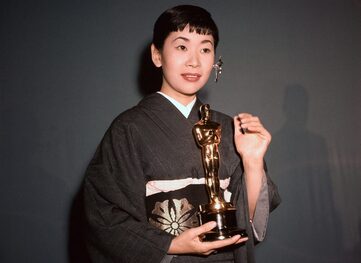 "Miyoshi Umeki with her Oscar" "Miyoshi Umeki with her Oscar" I recently wrote an article about the new film, The Half of It, directed by Alice Wu which won the top Tribeca Film Festival award. It got me thinking, with Asian-American films making breakthroughs in Hollywood recently, are things really changing? Are Asian-Americans going to be represented clearly in the movie industry now? Things may be slowly changing for the better, but it's also important to remember the first Asian-Americans to make a breakthrough in the film industry, and who paved the way for Asian-Americans in Hollywood today. Miyoshi Umeki was a Japanese-born actress who knew from an early age that she wanted to make it big in Hollywood. She would marvel at U.S. films and pretend to be an actress as she pranced around her living room. So, she moved to New York City in 1955 and sought out a career as an actress. Her opportunity came as she signed a contract to become a regular actress on Arthur Godfrey and His Friends. Her biggest achievement yet came when she starred in the film Sayonara in 1957 alongside Oscar winner, Red Buttons. Her stunning performance as the timid Japanese wife of an American airman won her the Oscar for Best Supporting Actress, making her the first (and only) Asian-American woman to ever win the prestigious award. However, her journey in Hollywood wasn't easy at all. Following the aftermath of World War II, Asians--especially Japanese-Americans--were only offered minor, stereotypical roles (which we still see today in many films) that portrayed them in a very cliche manner. Miyoshi Umeki was one of the actresses who had to learn to adjust to these stereotypes in order to make it in the industry. Although she did win an Oscar, it was for playing a role that confined her into a stereotypical box of what a Japanese woman should be according to the Western eye. But for an Asian-American actress in the 1950s, her choices were either to play demeaning and belittling roles or to play no roles at all. Like many other aspiring Asian-American actresses then, she chose the former. When Umeki's husband died in 1976, she took her Oscar, etched her name on it, and threw it away. What may seem baffling to others was a clear decision that Umeki was ready to make. The Oscar symbolized the West's recognition of her playing the suffocating role of a stereotypical Japanese fantasy woman. But Miyoshi Umeki was much more than that, and she said, "I know who I am, and I know what I did," standing up for the first time she had made a decision that didn't fit into the stereotypes that enslaved her during her time as an actress. This said, Umeki's career was incredible, with films and projects garnering her Tony nominations and Golden Globe recognition. She truly serves as a reminder that nothing is impossible, and even in the face of stereotypes, it's possible to make history. And that's what she did. To date, only 3 Asian-Americans have ever won an Oscar, and Umeki remains the only Asian-American woman to win one. In fact, what's baffling is that more white female actors have won Oscars for playing East Asian women. Directors and actresses like Lulu Wang (director of Parasite), Alice Wu, and Miyoshi Umeki have certainly challenged this pattern, but the decades-old stereotypes of Hollywood continue to make it difficult. I hope that we will continue fighting for equal representation of Asian-Americans in Hollywood, to give them the ability to shape and influence pop culture just as much as everyone else. Author: Carina Sun  "The Tape Family" "The Tape Family" It seems like non-Asian people have this tendency to label all Asian-related things as "oriental." Remember that "oriental skirt" you saw at the mall? Or the Halloween costume with the chopstick hair clips called "oriental costume?" Now imagine being told you needed to go to an "oriental school" because you were Asian. In 1884, that's what happened to Mary and Joseph Tape's daughter. Both of them were Asian-immigrants and U.S. Citizens. Their daughter was U.S.-born, but they were still treated as outsiders. When they tried to enroll their daughter, Mamie, into school, they were denied. They sued the school and the board of education, which made its way to the Supreme Court of California. However, the school superintendent encouraged a different path: one that would create "separate but equal schools" for Asian-Americans and Whites. This decision created national and international controversy, as it brought up the immense segregation problems Asian-American immigrants were facing. The situation worsened in 1905 when the San Fransisco Chronicle launched an anti-Japanese campaign targeting them specifically. Regardless, on October 11, 1906, the San Fransisco Board of Education directed that all schools in San Fransisco were to send their students of Japanese, Korean, and Chinese descent to new "oriental schools". This was the first time Asian-American students were legally required to be separated and excluded from equal education. This angered both Americans and the Japanese government, who argued that it was a violation of the rights of Japanese-Americans. In Tokyo, newspapers announced outrage with the U.S. government's actions and denounced the legislation. Concerned with the hit on his presidency, President Theodore Roosevelt came to an agreement with the Japanese government that he would not legally prevent Japanese immigrants from entering the U.S. if they slowed the influx of Japanese laborers into the U.S. Furthermore, Roosevelt then worked with California officials to reinstate Japanese students in exchange for limiting Japanese labor immigrants. So, in the end, it was a "win" for the Tapes. However, just 4 years later, the Immigration Act of 1924 essentially banned all Asian-Americans from immigrating to the U.S. at all, undermining all of this progress. Read about that in our article coming out tomorrow! Author: Carina Sun 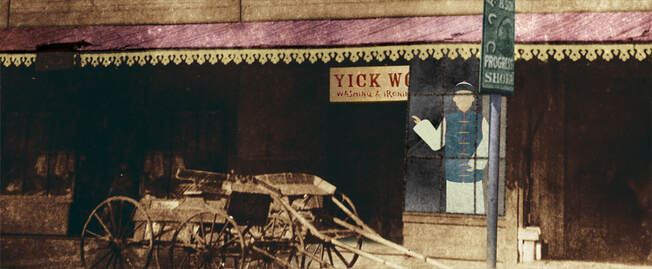 Picture courtesy of the Constitution Project Picture courtesy of the Constitution Project The late 1800s saw an influx of Chinese immigrants to the U.S., in search of opportunity and work. It also saw the implementation of one of the most twisted acts passed by the U.S. Government: The Chinese Exclusion Act. It was one of the hardest times to be a Chinese-American in the U.S. In 1880, two years before the Chinese Exclusion was passed, San Fransisco had already begun seeing racism and discrimination developing towards Chinese immigrants. One particular case was when an ordinance was issued that required all laundromats in the city to hold a permit issued by the city. However, even though over 89% of laundry businesses at the time were owned by Chinese workers, not one of them were granted a permit. Two of these workers were Yick Wo and Wo Lee, who had been arrested after first: not being granted a permit by the city, and second: after refusing to pay the 10$ fine associated with not having a permit. After their arrest, they sued the city for writ of habeas corpus, in defense for their rights. They argued that the fine and enforcement of the ordinance was a discriminatory act, and a violation of their rights as U.S. citizens under the Equal Protection Clause of the Fourteenth Amendment. The case (Yick Wo v. Hopkins) made its way to the Supreme Court. It was concluded that the the enforcement violated the Equal Protection Clause, because even if the law is impartial, if it is applied with an "evil eye and an unequal hand" than it becomes biased. The Yick Wo case resulted in one of the first opportunities and achievements to ensure equality of people's rights despite their legal status, which strengthened Fourteenth Amendment rights for all. Author: Carina Sun 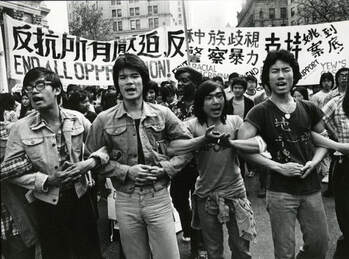 "Protestors in NYC Chinatown after Peter Yew's arrest" "Protestors in NYC Chinatown after Peter Yew's arrest" For the past decade, the Black Lives Matter movement has shed light on the intense police brutality towards the black community. Horrifying data from mappingpoliceviolence.org shows that in 2019, police killed 1,099 people, with black people making up 24% despite being 13% of the U.S. population. The second ethnicity most likely to face police brutality are hispanics, and the third are whites. So where are Asians on this list? While there are less reported cases of police brutality towards Asians in the media, it's still just as prevalent. In 2017, David Dao was on his way to Louisville, Kentucky when the flight announced they were overbooked. They asked for volunteers, then started ordering passengers to get off. Dao resisted, stating that he had patients waiting. This was when security officers forcibly dragged Dao off the plane, causing him to suffer a concussion, a broken nose, and the loss of two teeth. In 2015, Sureshbhai Patel, who was 57 at the time, was taking a walk through his son's neighborhood during a visit. Police received a call warning of a "skinny black man" wandering the neighborhood. When they arrived, officers didn't realize--or didn't care--that Patel did not understand English, and slammed him to the ground. He required surgery and intensive care to survive. In 1975, one man called for an end to police brutality and discrimination. Peter Yew was a Chinese-American living in New York City's Chinatown when he witnessed police brutally beating a 15 year old for a traffic violation. He grew concerned and intervened, which led to Yew being beaten, arrested, and beaten again on charges of assault on a police officer. Thousands of Asian-Americans took to the streets in protest against police brutality against their community. On May 19, the people in Chinatown started a demonstration for improved social services for minorities. This was one of the largest demonstrations ever in Chinatown, and though it was Peter Yew who sparked the protest and was the center of why it started, they also addressed the broader issues of the poor conditions and social services offered to Asian immigrants. Police attempted to shut down the march, but protestors and activists fought them fist to fist, standing up for their rights and the release of Peter Yew. As a result of this movement, the officers who beat up Yew were suspended and charged with assault. Because Yew stood up against police brutality, he sparked a movement among the Chinatown residents, uniting old and young people towards a common goal of ending oppression against Asian-American immigrants. Personally, I didn't know that police brutality towards Asian-Americans was ever as prevalent as this, but it's up to us to uncover and highlight these events so they are not forgotten in our country's history. Author: Carina Sun  Growing up as a Chinese American and as an avid Eagles Fan, I’ve always seen sports as a two-sided mirror. On one hand, they bring out the best in people – watching backup QB Nick Foles lead the Eagles to the Super Bowl in 2017 would be considered one of the greatest moments of my life, easily. However, sports can be a reflection on our society’s values and the deep, ugly truth that lies within the people. Eight years ago, an un-drafted Chinese American point guard shined as New York City’s brightest light and became an inspiration in the sports world for many Asians like myself. However, his journey has been twisted and shaped by scouts, coaches, and teammates, which have prevented him from truly thriving in the NBA. Jeremy Shu-How Lin was born in Torrance, California to two Taiwanese immigrants. As a teenager, Lin thrived at Palo Alto High School, as he led his team to a 32-1 record and was named to first-team All-State. Yet despite his accomplishments, both colleges and NBA teams failed to recognize his talent as he went undrafted in 2010. After bouncing around teams like the Warriors and the Rockets, Lin signed with the New York Knicks for the 2011 season. The Knicks, armed with weapons like Carmelo Anthony and Amar’e Stoudemire, struggled as 2012 came around, going 8-13 in their first 21 games. After injuries to multiple players on the team, the Knicks hesitantly gave Lin a chance to start. Quickly, the undrafted point guard rose in the NBA world. 25 points, 7 assists against the Nets. 28 points, 9 assists against the Jazz. 38 points against Kobe Bryant and the Lakers. A game-winning three pointer against Toronto. By mid-February, the Knicks had gone on a seven-game win streak, and the “Linsanity” was in full force. Lin’s play attracted many Asian Americans to tune into NBA games. Much of the community began to be inspired by how a Chinese American was dominating the headlines. However, Lin’s successes were met with criticism. After a poor game against Lebron James and the Heat, ESPN published an article called “A Chink In The Armor”, a direct use of an offensive racial slur. While playing in away games, Lin heard derogatory phrases like “Open your eyes!” and “Go back to China” from opposing fans. Though such discrimination lessened during his time with the Knicks, much of Lin’s life had already been plagued with racist acts. In high school and college, many scouts emphasized that Lin was an un-athletic player. However, Rockets GM Daryl Morey admitted in The Undoing Project that Lin performed very well at his pre-draft workout, and despite these results, scouts continued to believe that he was un-athletic. Morey notes that he “can’t think of any reason for it other than he was Asian.” After his season with the Knicks, Lin has since bounced around the league primarily as a backup. Though he eventually won a championship with the Raptors in 2019, Lin eventually moved to the CBA due to a lack of opportunity in the NBA for him, where he plays as of now. Like many other Asian American activists, Lin’s life has been shaped by harmful discrimination from critics. Yet, despite these clear disadvantages, Jeremy Lin overcame his critics and shattered all expectations. As an undrafted player, he brought the Knicks back into the playoffs and broke stereotypes on his athletic ability. As an international icon, he continues to use his position to promote Asians in the basketball world. Though Linsanity may have been short lived, Jeremy Lin’s impact on the NBA has paved the way for Asian Americans to be represented in the sport and entertainment world. Author: Devin Wu DeclarASIAN Ambassador 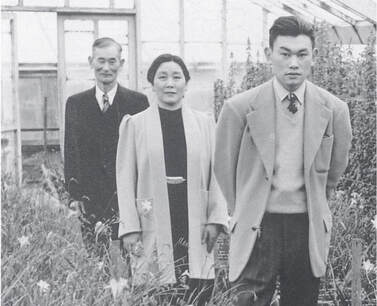 "A young Fred Korematsu" "A young Fred Korematsu" Pre-DeclarASIAN-me was a shy, awkward preteen who just wanted to fit in. It was a version of me that would bring down my own culture to make someone laugh. No one in my family was very involved in social-activism, and so I grew up unaware that "Asian-pride activism" was a thing. Until in eighth grade, I was introduced to my National History Day project. Mr. Fred T. Korematsu. Fred Korematsu was the son of Japanese immigrants in the 1900s, a bad time to be a Japanese-American. In 1942, the United States erected dozens of Japanese internment camps across the country. Japanese-Americans were rounded up and sent to these detention camps where they lived in poor conditions and faced harsh discrimination. President Roosevelt's signing of Executive Order 9066 authorized the U.S. military to take this action. Korematsu chose to defy this. He was an American citizen, and he was determined to continue living as one. But on May 30, 1942, he was arrested simply because he was a Japanese American who wasn't in an internment camp. In jail, Korematsu was approached by Ernest Besig of the ACLU, who helped him testify his case all the way to the Supreme Court. Korematsu argued that the discriminatory conviction was a violation of his civil rights and liberties guaranteed by the United States Constitution. In the end, the high court ruled against Korematsu in a 6 to 3 decision, on the basis that the incarceration was a military necessity. In 1976, Korematsu's courage was finally acknowledged when President Gerald Ford signed an official proclamation apologizing for the internment and terminating the Executive Order 9066 once and for all. Finally in 1988, President Ronald Reagan signed the Civil Liberties Act of 1988 to provide financial restitutions for each survivor of the camps to pay for damages, although now it is still debatable whether that really made up for all of the mental and physical damages the internment camps caused. Korematsu's stand was not only important for the advancement of Japanese-American rights, it was also crucial for the development of the United States' attention to civil liberties as well. Author: Carina Sun |
In Honor of Asian Pacific American Heritage MonthWe are bringing you the stories of inspirational Asian Americans from history. Read More:5/30/20 - The Exceptional Example Ronald Takaki Set
5/27/20 - The Incredible Legacy of Kalpana Chawla 5/26/20 - When Marrying a Non-American Meant Losing Your Citizenship 5/25/20 - Honoring the 442nd Infantry Regiment 5/24/20- A Glimpse at Asian-Americans in Hollywood -- Miyoshi Umeki 5/22/20 - The Oriental Schools of San Fransisco 5/21/20 - Equality For All Colors - Yick Wo v. Hopkins 5/20/20 - An End To Police Brutality: Peter Yew's Stand 5/19/20 - Finding His Form: Linsanity in 2012 5/18/20 - Internment and Injustice: Fred T. Korematsu 5/17/20 - The Courageous Stand of Gene Viernes and Silme Domingo 5/16/20 - The Unbreakable Spirit of Wong Kim Ark 5/15/20- The Admirable Perseverance of Patsy Takemoto Mink 5/13/20 - The Lasting Legacy of Grace Lee Boggs 5/12/20-Remembering "The Forgotten" -- The Chinese migrants who built America's first Transcontinental railroad 5/11/20 - The Singing Neurosurgeon: Dr. Ayub Ommaya |


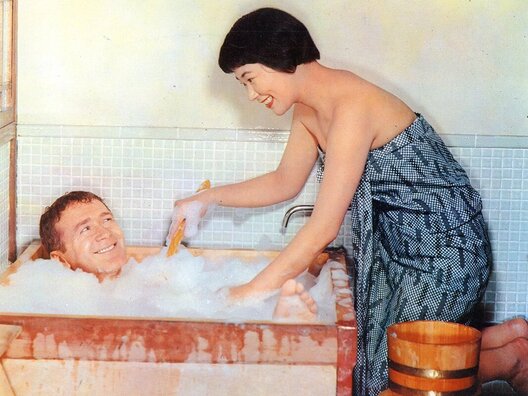
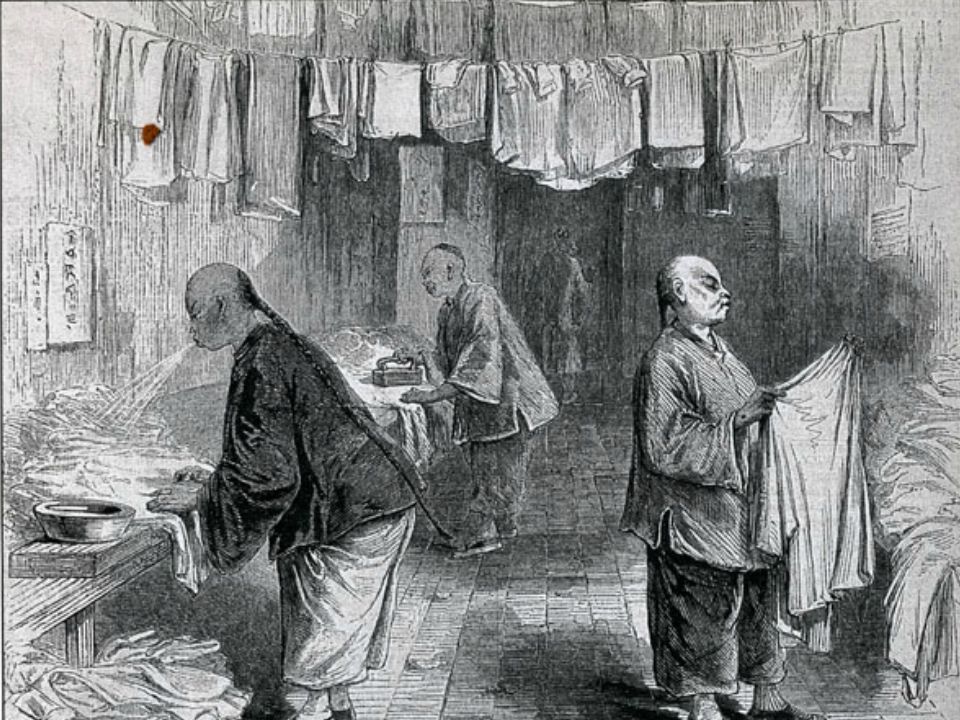

 RSS Feed
RSS Feed